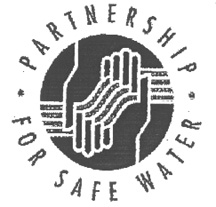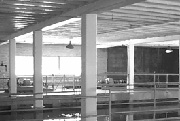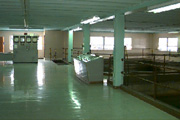|
Partnership for Safe Drinking Water EPA program to enhance water treatment performance August 11, 1988
The purpose of the Partnership is to survey treatment facilities, treatment processes, operating and maintenance procedures and management oversight practices. The objective is to identify and prioritize areas that will enhance the capabilities to prevent the entry of Cryptosporidium, Giardia and other microbial contaminants into the treated water, and to voluntarily implement those corrective actions that are appropriate for the system. The Partnership implementation plan consists of four phases: I.) Eligibility requirements include compliance with the Surface Water Treatment Rule for six months and a commitment to pursue further stages of the program. II.) Collect basic plant information and plant performance data within 180 days of joining the program. III.) Undertake a self-assessment that is based on the Composite Correction Program. The self-assessment includes a performance assessment, major unit process evaluation and identification and correction of performance-limiting factors. IV.) Completion of a third party assessment. Upon completion of this phase and review and approval of the completion report, the water supplier will be presented with a Partnership for Safe Water "Administrator's Certificate of Recognition."
Key Salt Lake City Public Utilities personnel are Florence Reynolds, Water Quality and Treatment Administrator, Linda Moss, Water Treatment Process Control Analyst, Ken Hibbert, Manager Big Cottonwood WTP, Bob Cooper, Manager City Creek WTP, and Vic Fernandez, Manager Parleys WTP. The plant operators at each facility support them. Dr. Eva Nieminski, State Division of Drinking Water has taken a leadership role in coordinating both Alliance and the Partnership. The Alliance has diligently moved forward in meeting the requirements of the Partnership program, completing Phase II and Phase III. On May 29, 1998 the Utah Water Quality Alliance submitted Phase III in a joint completion report and are now awaiting review by the Partnership Coordinator with the American Water Works
What does this means to the water consumer who receive drinking water from treatment facilities located within the five participating water agencies service areas? They are assured that their water provider is commitment to providing the best quality water possible and that each treatment facility has gone through a rigorous effort to optimize water treatment processes. Florence Reynolds praises the efforts of the all the Alliance members and particularly those under her direction for their commitment to the goals of the Partnership. "Filtered finished water from all of Salt Lake City's water treatment plants is well below the drinking water turbidity standard of 0.5 NTUs at the self imposed 0.1 NTU level established by the department," said Reynolds. "Water from the Salt Lake City's two other suppliers, Metropolitan Water District of Salt Lake City and Salt Lake County Water Conservancy District likewise are at this same optimized level of treatment," according to Reynolds. In recognition for the Alliance's efforts, the Utah Safe Drinking Water Board presented the five agencies, the 1997 Achievement Award for "Their Cooperative Efforts to Achieve the Highest Possible Standards of Water Treatment." |


